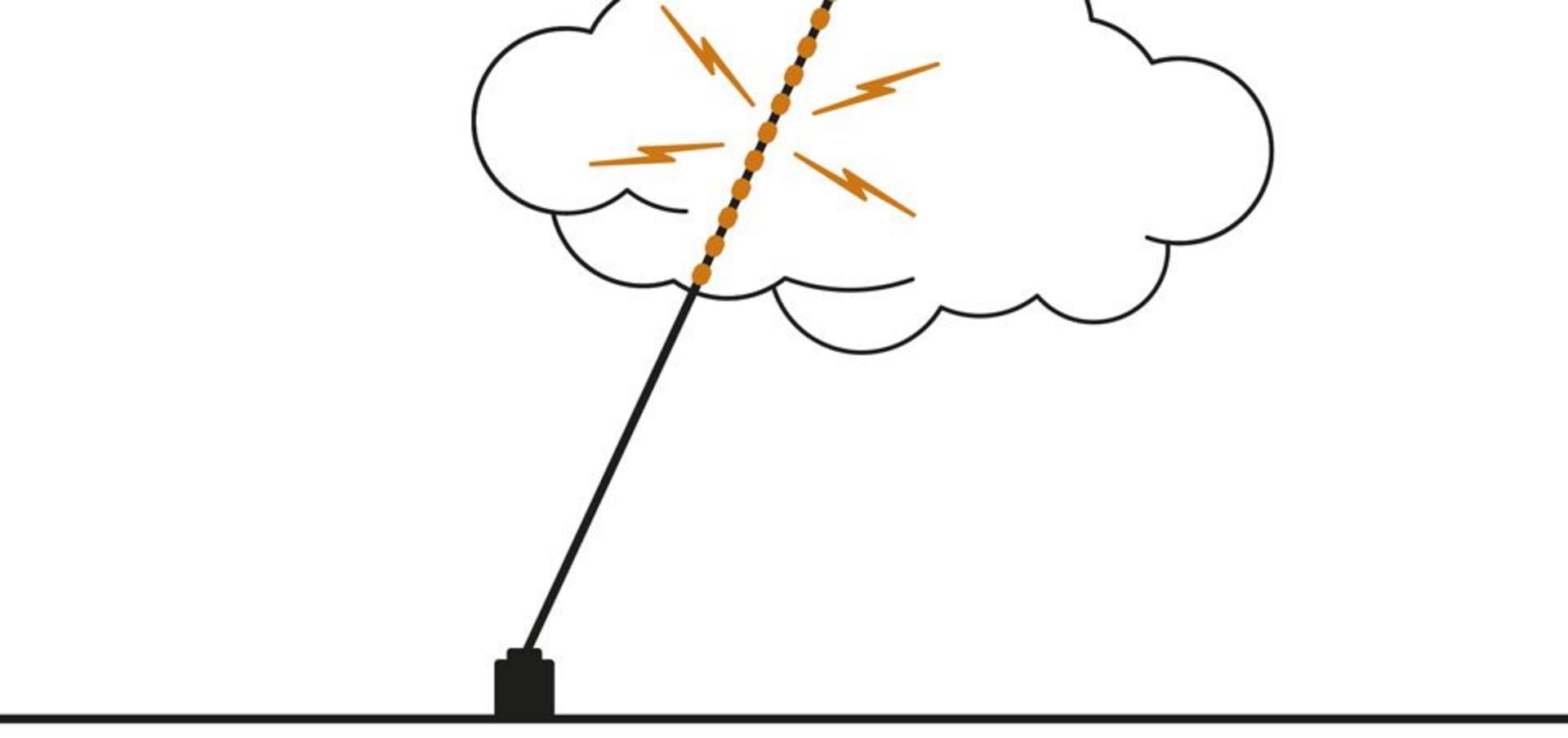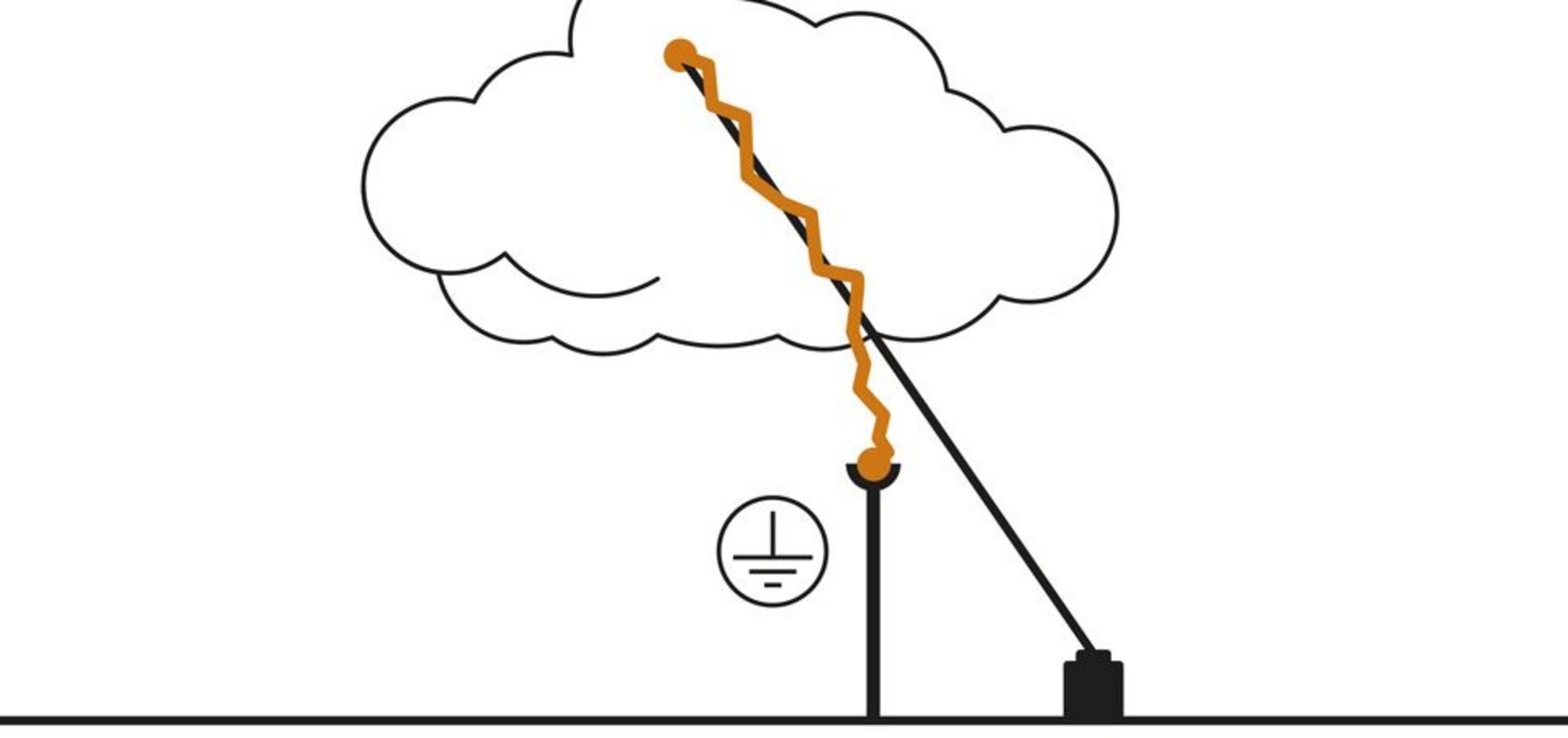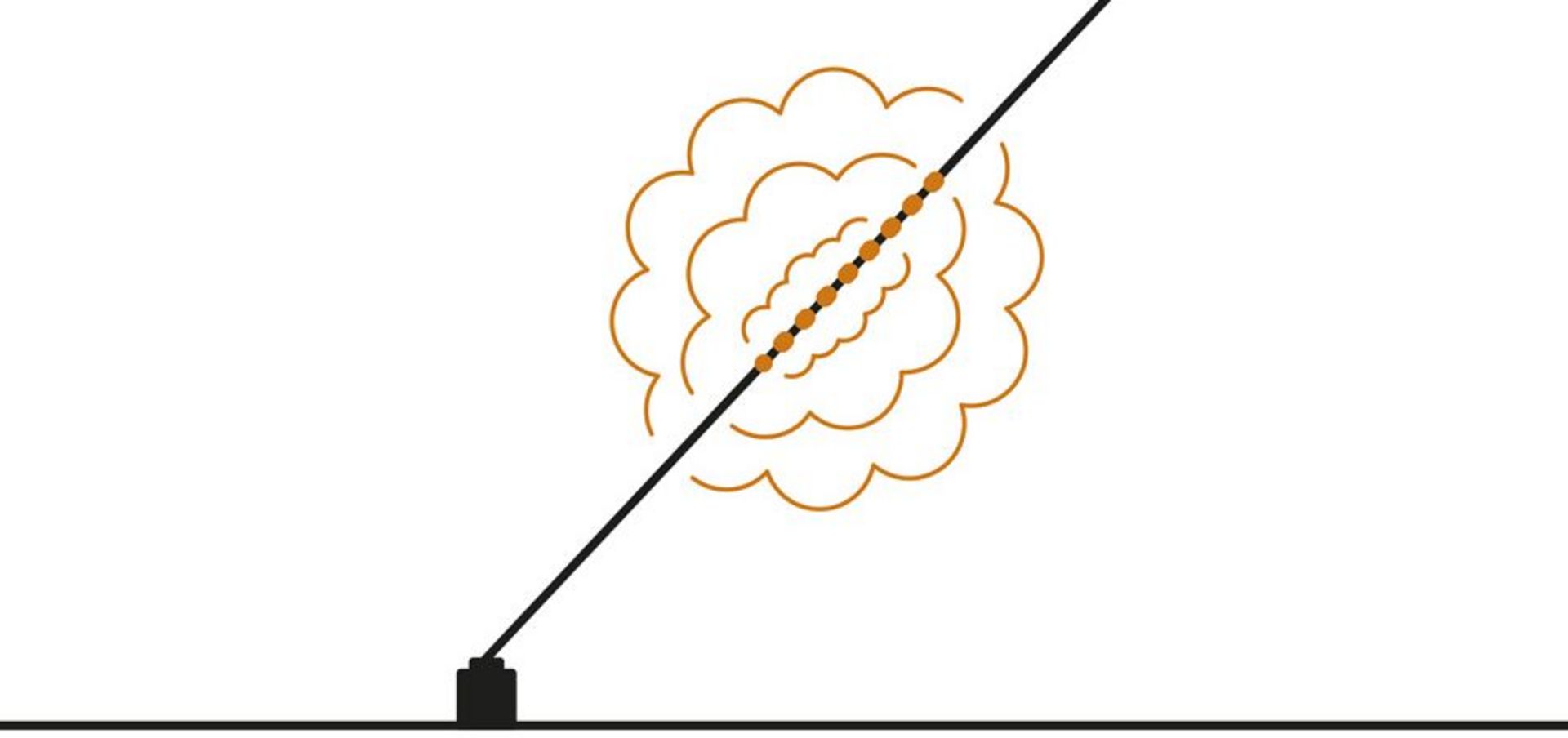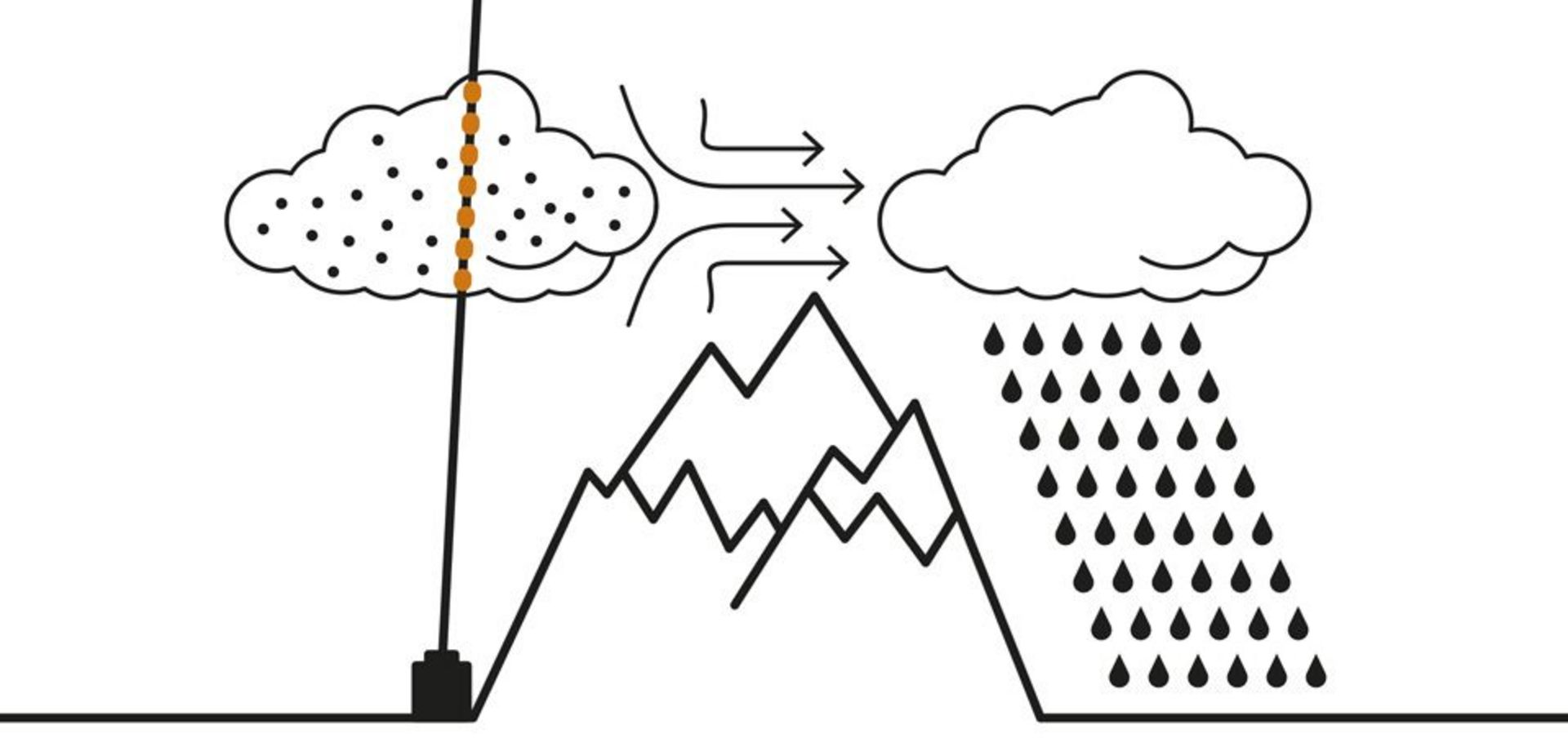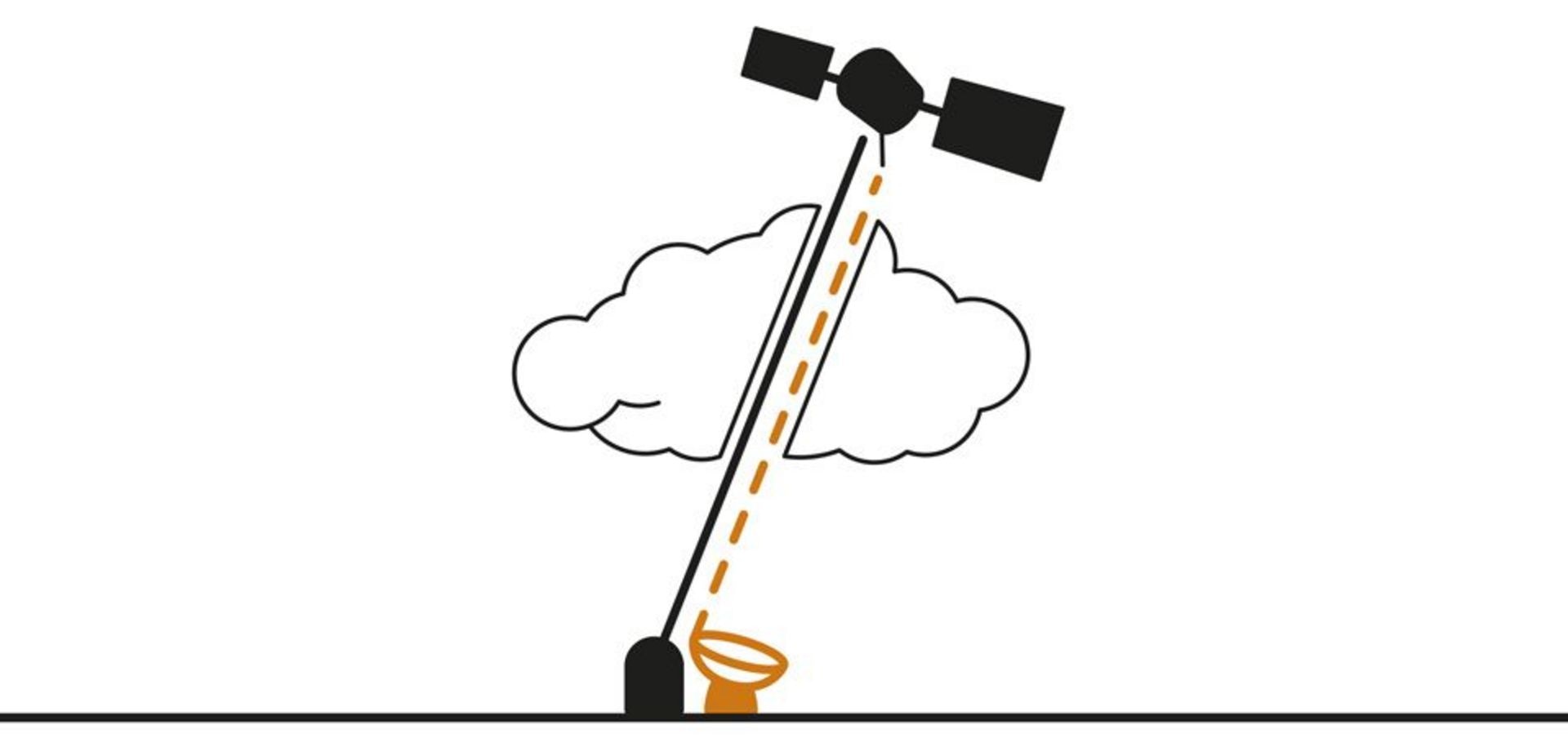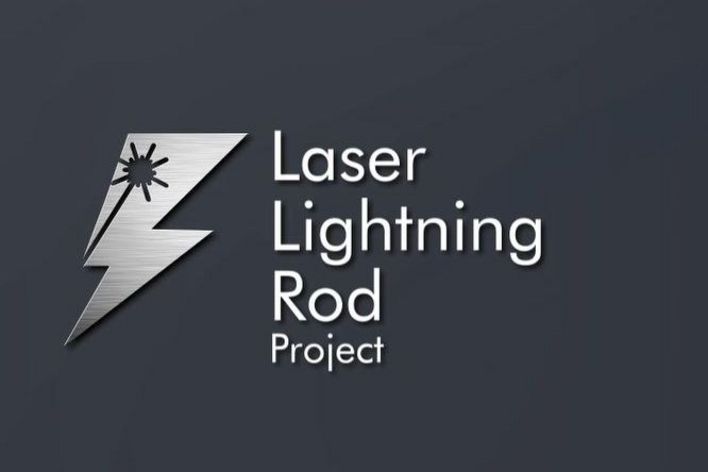The Swiss expert in nonlinear optics came up with the idea while investigating how air reacts when you expose it to a high-power laser beam. His results showed that the air ionizes. This is due to a phenomenon known as Kerr-induced self-focusing: the field strength of a high-intensity laser beam affects the refractive index of the air in such a way that the air itself acts as a kind of focusing lens for the laser beam.
This creates high intensities that ionize the air. Electrons are released, defocusing the laser beam and causing the entire process to start over. The beam remains stable, continuously focusing itself. “With the right beam source, we can stretch the focus out to a length of one hundred meters,” says Wolf. “Ionization produces plasma channels known as filaments—and that’s what we can use to affect the weather.”
Using lasers to trigger lightning from clouds
Wolf is currently working on three applications for his filaments, the first of which is to trigger lightning in clouds. “The filaments trigger discharges and the lightning follows the channel. So, in addition to triggering lightning, we can also cause it to discharge in a certain direction,” says Wolf.
This gives Wolf two possible ways of eliminating the risks posed by thunderclouds. He can either trigger lightning within a cloud that never actually reaches the ground—discharging the cloud until it becomes calmer—or he can use the filament to guide the lightning to a standard lightning conductor on the ground. “There is huge demand for improved protection. The costs associated with thunderstorms and lightning strikes run to five billion dollars a year in the US alone, primarily due to disrupted air traffic and damage to aircraft and power lines.”
Laser protects airports and power plants
Wolf would like to see stationary laser systems installed around airports and power plants, which could discharge approaching storm clouds before they pose any danger. “I think we’ll be ready to do that in five years’ time. It works perfectly under laboratory conditions and we’ve already run successful tests outdoors, too.” The key to success is choosing the right beam source. “You need a femtosecond laser with a peak pulse power of one terawatt and a high, stable repetition rate of more than one kilohertz. TRUMPF Scientific Lasers is currently developing a laser for me with those specifications.” The collaboration stems from some trial measurements for lightning conduction carried out at the TRUMPF laboratory in Munich. From summer 2020, the new laser from TRUMPF will be tested on Mount Säntis in eastern Switzerland.
Delaying rainfall
The laser-generated filaments can also be used to affect the weather in other ways. Wolf converts vapor into small water droplets that hover in the air — in other words, he creates clouds. For water vapor to condense in the air, you need surfaces on which the phase transition can take place, in this case aerosols such as dust or sand. “Ionization with the high-power laser enables us to make the existing aerosols more hydrophilic. They attract more moisture, forming droplets where there were none before,” says Wolf. “What we can’t do is make the cloud rain. Once we’ve created it, it simply lives out its natural lifespan.”
Where Wolf has succeeded, however, is in preventing wet clouds from raining for a certain period of time under labo-ratory conditions. To do this, he draws on the principle investigated by Eberhard Bodenschatz, which states that small droplets do not fall. By turning the aerosols contained in the cloud into genuine moisture magnets, Wolf ensures that the water spreads itself over multiple surfaces. “The droplets split up and are not big enough to fall to the ground. In the future, this could enable us to prevent wet clouds from raining until they are over dry areas. This could help us combat both droughts and flooding,” Wolf explains, setting out his vision of how the technology could be used.
Drilling holes in clouds
Wolf also hopes to use his filaments to improve communication between satellites and ground stations, which is often obstructed by clouds and fog. In the course of his experiments, Wolf hit upon a further phenomenon of ionization. The jump in temperature of the air molecules triggers a shock that produces a sudden sound wave.
“We can use this acoustic explosion to push aside droplets in mist and clouds, basically using the long laser focus to drill a channel through the clouds.” This requires the individual shocks to take place at very short intervals. “And that’s why this application is all about having a very high repetition rate”. The hole in the clouds could be used to transfer information between the Earth and space without anything getting in the way—and the data transfer could also take place via laser!
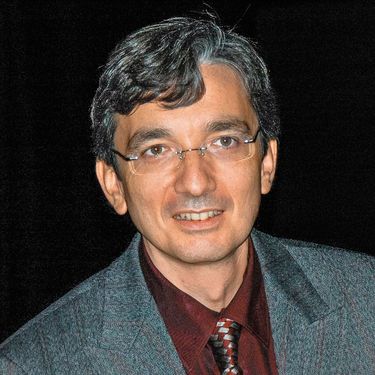
Jean-Pierre Wolf is Professor at the University of Geneva and is an expert in nonlinear optics. He wants to use laser beams to influence cloud formation and control lightning.


